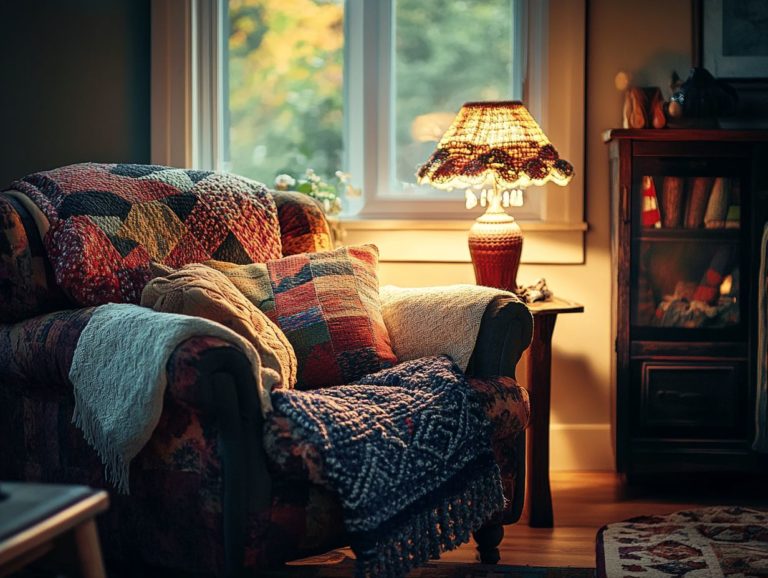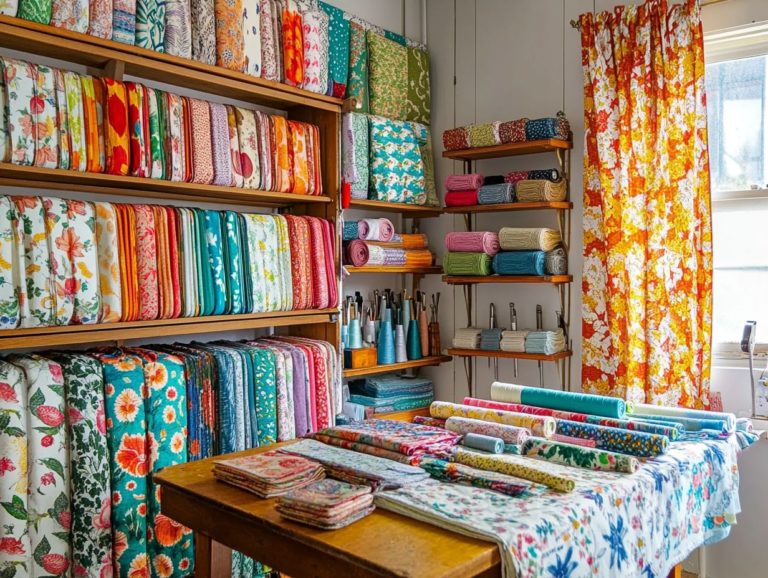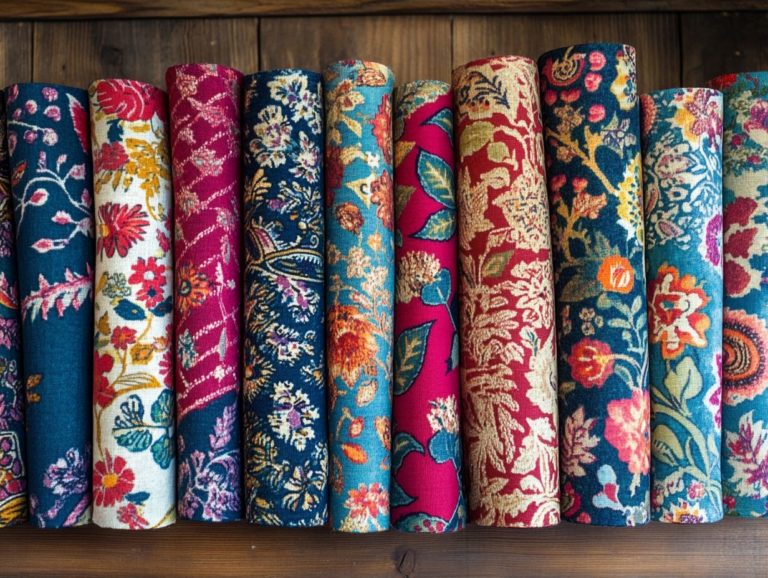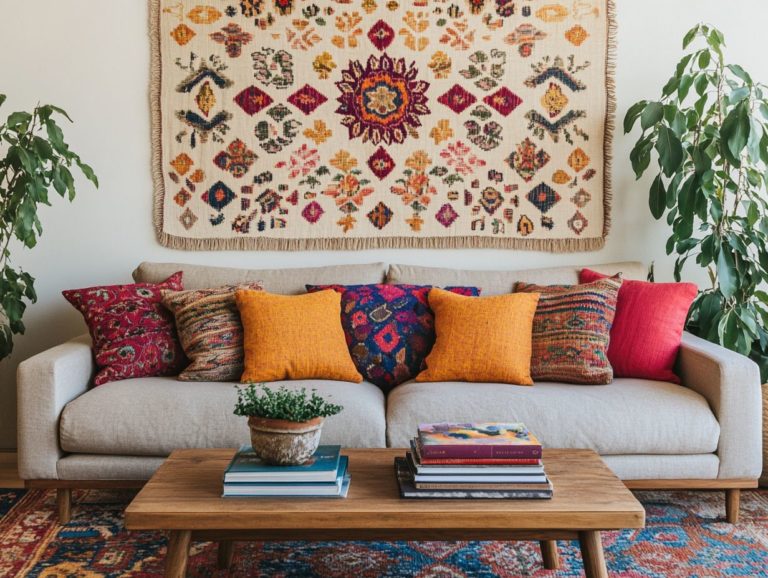10 Fun Facts About Vintage Textile History
Textiles have woven themselves into the fabric of human history, mirroring cultural shifts, technological advancements, and economic transformations while showcasing their cultural significance.
Consider the journey from the world s oldest known fabric, dating back to 5000 BC, to the profound changes brought about by the Industrial Revolution. The narrative of textiles is rich and multifaceted, reflecting the fashion history that has evolved over centuries.
Get ready to discover ten fascinating facts that will amaze you about vintage textile history, delving into everything from the Silk Road’s pivotal role in trade to the pressing environmental concerns of fast fashion.
Uncover the enduring legacy of textiles and what they reveal about our past and present, celebrating the craftsmanship and sustainability that define vintage pieces.
Contents
- Key Takeaways:
- 1. The Oldest Known Textile Dates Back to 5000 BC
- 2. The Silk Road Played a Major Role in Textile Trade
- 3. The Industrial Revolution Revolutionized Textile Production
- 4. The Invention of the Sewing Machine Changed the Textile Industry
- 5. Textile Production Was a Major Source of Income for Women
- 6. The First Synthetic Dye Was Created in 1856
- 7. The Rise of Fast Fashion Has Led to Environmental Concerns
- 8. Textiles Have Been Used as Currency in Some Cultures
- 9. The World’s Oldest Carpet is Over 2,000 Years Old
- 10. The World’s Most Expensive Fabric is Made from Gold
- Why Is Textile History Important to Study?
- How Has the Textile Industry Evolved Over Time?
- What Are Some Fun Facts About Textile Production Methods?
- What Are the Different Types of Textiles and Their Uses?
- What Are Some Famous Fashion Designers Who Have Used Vintage Textiles in Their Designs?
- Frequently Asked Questions
- What is considered “vintage” in terms of textile history and vintage clothing significance?
- When did textile production first begin, influencing fashion history?
- What are some popular vintage textile materials in vintage clothing?
- What is the cultural significance of vintage textiles in history?
- What are some iconic vintage textile designs appreciated by the collector community?
- What is the most expensive vintage textile item ever sold in fashion history?
Key Takeaways:
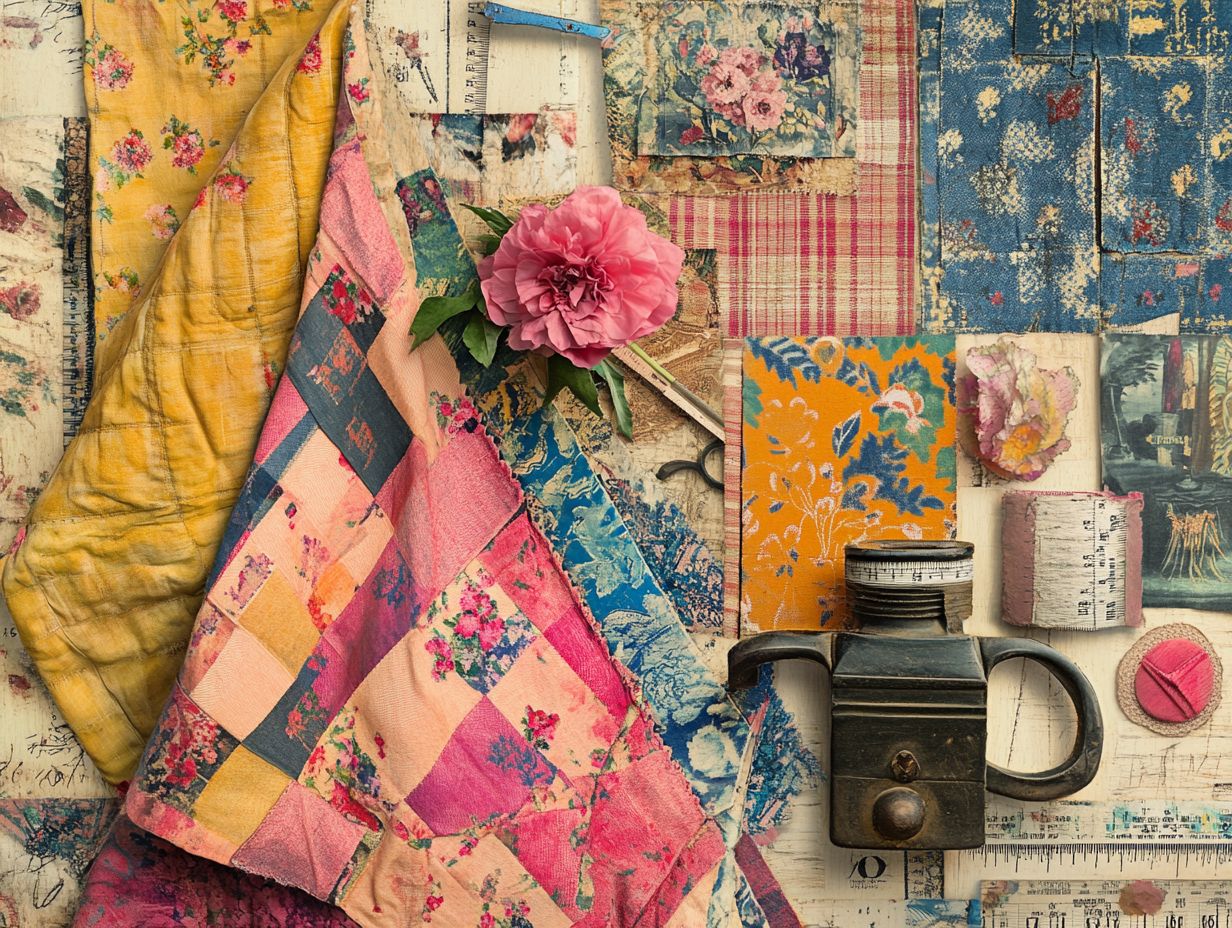
- The oldest known textile dates back to 5000 BC, showcasing the enduring importance of textiles in human history and their role in vintage aesthetics.
- The Silk Road played a major role in the trade of textiles, connecting cultures and influencing fashion trends, leading to a rich exchange of unique qualities and rare pieces.
- The Industrial Revolution changed how textiles were made, leading to faster production and cheaper prices, which impacted consumer values.
1. The Oldest Known Textile Dates Back to 5000 BC
The oldest known textile dates back to 5000 BC. It not only connects us to our ancient past but also highlights the cultural significance of textile craftsmanship throughout history. This textile showcases the unique aesthetics and exceptional workmanship that define vintage textiles, now sought after as authentic pieces in vintage markets.
Originating from the early days of human civilization, this ancient fabric was crafted from locally sourced fibers, reflecting the sustainable practices of its creators. Its intricate weaving techniques mirror the societal values of the time, where textiles were not merely functional but also symbols of status and artistry. This is akin to the craftsmanship and sustainability celebrated in the collector community today.
As the centuries unfolded, these textiles found their place in various cultural ceremonies and daily life. They mirrored the evolving tastes and needs of consumers. Today, this historic textile resonates with the contemporary movement toward sustainable fashion, where a renewed appreciation for artisan designs and eco-friendly materials challenges the fast fashion industry. It advocates for a return to timeless, quality creations that embody nostalgia and individuality.
2. The Silk Road Played a Major Role in Textile Trade
The Silk Road was an important route for trading textiles, allowing the exchange of rare and vintage pieces that enriched cultures and introduced unique qualities and craftsmanship to various regions around the globe. This ties into the broader narrative of fashion history.
This extensive network of trade routes spanned thousands of miles, connecting diverse societies and creating an environment brimming with artistic innovation. Through this vibrant interchange, textiles such as luxurious silks and intricately patterned carpets emerged as remarkable treasures, each reflecting the distinct aesthetic values of their origins and inspiring textile designers today.
These vintage pieces went beyond being just garments or household items; they became symbols of cultural identity, encapsulating stories and traditions.
As you navigate the modern landscape that increasingly values sustainable alternatives and eco-friendly fashion, these historical artifacts serve as poignant reminders of the enduring legacy of craftsmanship and the power of cultural dialogue. They encourage a renewed appreciation for ethically sourced textiles, inviting you to embrace the rich narratives woven into each unique piece, echoing the vintage aesthetics that are resurging in popularity.
3. The Industrial Revolution Revolutionized Textile Production
The Industrial Revolution transformed textile production processes, leading to an era where fast fashion dominated. This shift overshadowed the artisan designs and craftsmanship that once defined vintage clothing and sustainable alternatives, challenging the authenticity of modern production methods.
Innovations like the spinning jenny and power looms increased efficiency and lowered production costs. Consequently, consumer behavior shifted to prioritize quantity over quality. This rapid production method fostered a culture of disposability, where garments were often worn just a few times before being discarded, raising concerns about environmental impact.
In contrast, vintage clothing carries a rich history and enduring value. It showcases the artistry and sustainability that often gets lost in today s throwaway society. The rise of fast fashion has sparked concerns about environmental sustainability, underscoring the urgent need for you to make more eco-conscious choices. Embracing timeless pieces can help reduce waste while celebrating the unique aesthetics of vintage fashion.
4. The Invention of the Sewing Machine Changed the Textile Industry
The invention of the sewing machine marked a pivotal moment in the textile industry. It ushered in an era of mass production while challenging the craftsmanship so revered in vintage fashion today. This emphasizes the need for preservation techniques to maintain these historical treasures.
As production speed increased, the market became flooded with garments, often overshadowing the artistry and detail that defined handmade pieces. With pre-made clothing widely available, traditional techniques began to fade, shifting the focus to efficiency and quantity over quality. This trend has fueled the vintage collecting movement.
This shift has ignited a resurgence in eco-friendly fashion movements. Consumers and makers are increasingly yearning for the quality craftsmanship reminiscent of days gone by, often explored in fashion exhibitions and museums.
By embracing sustainable practices and valuing handmade goods, you can bridge the gap between innovation and tradition. This approach honors the rich heritage of vintage craftsmanship while paving the way for a more conscientious future in fashion. Fashion influencers advocate for sustainable alternatives.
5. Textile Production Was a Major Source of Income for Women
Historically, textile production was a significant source of income for women, highlighting their essential role in an industry that values not just economic input but also the artistry and craftsmanship behind vintage textiles and historical fashion. This reveals the socio-economic contributions that resonate in the vintage collector community today.
Their contributions supported family incomes and fostered a thriving community of vintage collectors who appreciate authenticity and creativity. Consider intricately woven pieces like hand-dyed quilts and embroidered garments; these items do more than showcase women’s skills they narrate rich stories of cultural heritage and tradition.
The renewed interest in vintage textiles has breathed new life into these crafts. Collectors celebrate the artistry while acknowledging the socio-economic contributions of women in this dynamic marketplace. Treasures such as 19th-century lacework and locally sourced fabric garments have emerged as cherished collectibles. They reveal the profound impact of women’s labor in shaping both historical and contemporary fashion landscapes, highlighting the importance of pricing vintage fairly.
6. The First Synthetic Dye Was Created in 1856
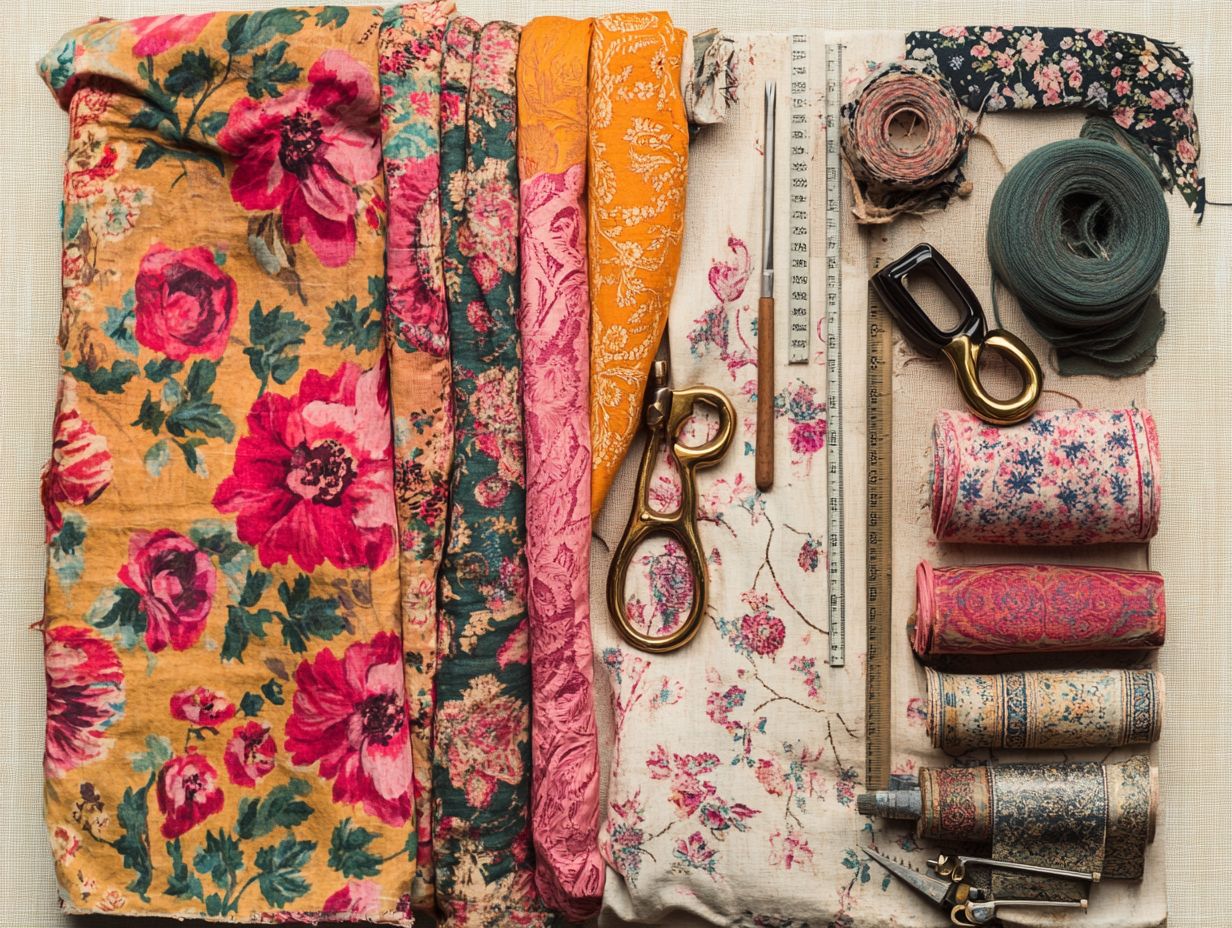
The creation of the first synthetic dye in 1856 was an important event in textile history. It allowed for vibrant colors in clothing while raising intriguing questions about authenticity and sustainability, especially regarding vintage pieces and their unique aesthetics.
This innovation changed everything! It opened the door to a stunning array of hues that were once unimaginable. It also shifted consumer values, leading to making lots of clothes quickly and a desire for instant gratification. In contrast, vintage clothing often embodies the charm of natural dyes and authentic materials, harking back to a time when craftsmanship was more important than fleeting trends, which still influence fashion today.
Now, as awareness of environmental issues continues to rise, both designers and consumers are increasingly supporting sustainable dyeing practices, or methods that are friendly to the environment. The revival of traditional techniques, along with a commitment to eco-friendly methods, powerfully reminds us that beauty and responsibility can coexist, echoing the values of vintage heritage.
7. The Rise of Fast Fashion Has Led to Environmental Concerns
The rise of fast fashion has ignited significant environmental concerns. This prompts a search for vintage aesthetics and sustainable fashion as alternatives that emphasize quality over quantity. We must recognize the impact of our choices on the planet, including the carbon emissions generated by the industry.
This awareness shows the staggering carbon emissions produced by the rapidly made garments that flood the market. This contributes to overflowing landfills filled with discarded clothing and highlights the importance of sustainable alternatives.
You might find yourself drawn to the vibrant collector community, where vintage fashion not only offers a unique style but also serves as a sustainable option. Embracing older textiles is a statement against the disposable culture of fast fashion, cultivating a renewed appreciation for the craftsmanship and history woven into each piece, often showcased in fashion exhibitions.
This shift helps reduce waste and underscores the importance of preserving our planet s resources while celebrating sustainable practices, reflecting the principles of eco-friendly fashion.
8. Textiles Have Been Used as Currency in Some Cultures
In various cultures, textiles have served as a form of currency, showing their cultural significance and the authenticity of handcrafted vintage pieces, which are now regarded as historical treasures. Many collectors value their unique qualities and the stories they tell.
Take the intricate kente cloth of the Ashanti people in Ghana, for example. It was not just a status symbol but also a medium of exchange in trade. Each textile tells a story through its patterns and colors, reflecting the values and beliefs of its creators.
Similarly, in the Andes, the vibrant textiles woven by indigenous communities were once used to barter for goods. This showcases the deep connection between craftsmanship and economic exchange. Today, these vintage pieces hold immense value, not only as artifacts but as representations of enduring consumer appreciation for authenticity, artistry, and the rich narratives woven into each thread.
9. The World’s Oldest Carpet is Over 2,000 Years Old
The world’s oldest carpet, which dates back over 2,000 years, is a remarkable testament to the artistry and intricate designs that define vintage textiles. This exceptional artifact secures its enduring place in textile history.
This extraordinary creation showcases the craftsmanship of its makers and mirrors the cultural and social values of its time. Its vibrant colors and complex patterns reveal a sophisticated understanding of design principles and natural dyeing techniques methods used to color fabric using plants or other natural sources that were truly advanced for the era.
As you delve into this historical treasure, you gain valuable insights into the aesthetics and functional roles textiles played in ancient societies. Researchers studying the carpet uncover stories of trade and artistry, enriching your appreciation for the artistry that has transcended generations.
10. The World’s Most Expensive Fabric is Made from Gold
The world’s most expensive fabric, intricately crafted from gold, embodies the pinnacle of luxury in vintage textiles. It showcases unique qualities that represent not just wealth but also a rich history of craftsmanship in fashion throughout the ages.
Its origins trace back to ancient civilizations, where artisans meticulously wove gold threads into exquisite cloth. This transformation made it a symbol of royalty and prestige reserved for the elite and highly coveted among collectors.
Collectors and historians alike appreciate how such fabric encapsulates the essence of the eras it hails from. It provides deep insights into the social hierarchies and cultural values of those times. Today, its intrinsic value remains, particularly in vintage clothing and artisan designs, serving not just as a textile but as a testament to craftsmanship that has withstood the test of time across countless generations. For inspiration, explore 5 vintage fabric inspirations from history.
Why Is Textile History Important to Study?
Discovering textile history is an exciting journey that opens your eyes to the amazing world of fabrics. It’s essential not just to grasp the cultural significance of fabrics and patterns but also to appreciate the incredible craftsmanship behind vintage fashion.
This exploration reveals sustainable practices that are increasingly relevant in today’s world. By immersing yourself in the techniques once utilized by artisans, you can uncover innovative approaches to materials and waste reduction that have been overshadowed by the fast-paced modern industry.
Consumers of the past placed immense value on quality and durability lessons that can inspire a shift in your purchasing decisions today. As sustainability takes center stage for modern designers, recognizing these historical practices gives them the power to create textiles that honor tradition while meeting the contemporary demand for responsible production.
Ultimately, this knowledge fosters a deeper connection between you and the garments you choose, promoting a more mindful approach to fashion.
What Are Some Notable Textile Artifacts from History?
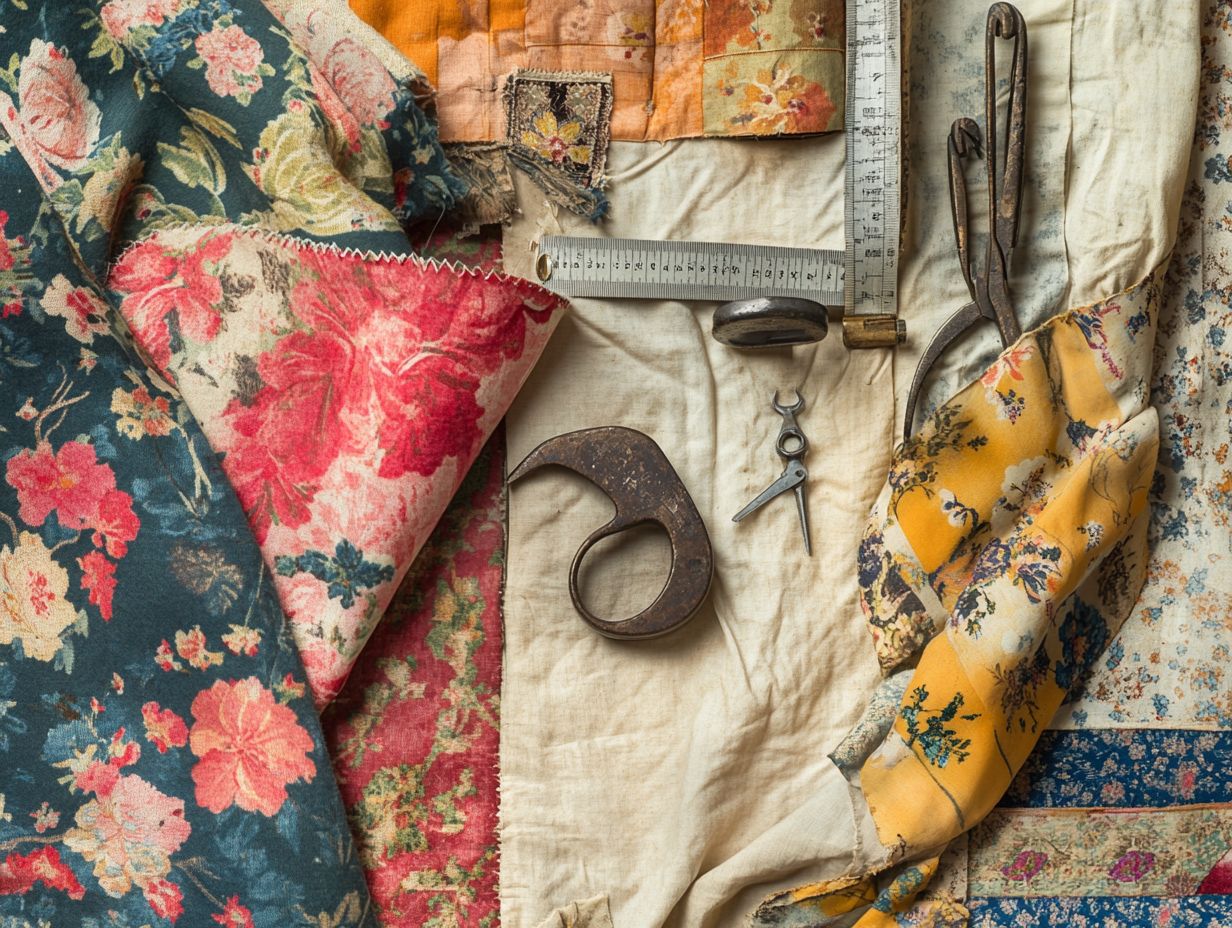
Notable textile artifacts from history, such as vintage textiles and historical treasures, offer you a fascinating glimpse into past cultures. They highlight the exquisite craftsmanship and authentic techniques that went into their creation.
These artifacts not only showcase the artisans’ remarkable skills but also reveal the social, economic, and political influences of their era. Take, for example, the intricate tapestries of medieval Europe; they were more than mere decorations they functioned as status symbols in royal households, narrating tales of battles and mythology.
In today s fashion landscape, you can see a revival of these unique designs. Contemporary designers draw inspiration from vintage patterns and textures, seamlessly integrating them into modern garments. This marriage of old and new not only pays homage to the artistry of the past but also champions sustainability by celebrating the beauty of recycled aesthetics in our fast-paced fashion industry.
Explore more about the fascinating world of textiles today!
How Has the Textile Industry Evolved Over Time?
The textile industry has undergone remarkable transformations, moving from the charm of handcrafted vintage clothing to the era of mass production. Recently, a notable shift toward sustainability has rekindled the values of historical fashion.
This evolution results not only from technological advancements, such as machine weaving and digital printing, which enhance production capabilities, but also from significant changes in consumer behavior. As a modern shopper, you are likely more aware of environmental impacts and are drawn to eco-friendly materials and ethical manufacturing processes. The rising interest in vintage clothing contrasts sharply with the fast fashion model, reflecting a shared desire to honor history and craftsmanship.
Brands respond to these trends by skillfully merging innovation with sustainability, paving the way for a future that respects both the past and our planet.
What Are Some Fun Facts About Textile Production Methods?
Textile production methods offer a captivating array of techniques that have evolved over centuries, transitioning from ancient hand-weaving to contemporary machinery. Each of these methods plays a vital role in shaping the character of vintage textiles and historical fashion.
These techniques provide a unique glimpse into cultural heritage and craftsmanship, highlighting how artisans once devotedly crafted fabrics using time-honored practices. For example, traditional methods like block printing a technique of stamping designs onto fabric and indigo dyeing a process of using natural dye extracted from indigo plants not only create stunning patterns but also connect you, as a contemporary designer or enthusiast, with the roots of this craft, sparking a revival of interest in sustainable fashion.
As society increasingly leans toward eco-friendly choices, many are attracted to the durability and uniqueness of vintage textiles. Each piece tells its own story through every thread and weave, illustrating a beautiful harmony between past artistry and present consciousness.
What Are the Different Types of Textiles and Their Uses?
You ll discover a rich variety of textiles, each boasting unique properties and uses, from sturdy cotton fabrics that endure the test of time to luxurious silks that whisper elegance. Vintage textiles showcase exquisite craftsmanship and play a crucial role in sustainable fashion.
These materials not only dazzle the eye but also offer functional qualities that cater to your diverse fashion needs. Take linen, for example; its breathability makes it a go-to choice in warmer climates, while wool becomes your best friend during chilly months due to its insulating prowess.
Vintage textiles like brocade and damask, with their intricate patterns and textures, are enjoying a delightful revival in contemporary collections. This resurgence emphasizes a growing desire for authenticity and artistry in fashion. Their distinctive allure pays homage to past eras, showcasing how these fabrics can be reimagined in today s style landscape. Embracing them means making essential ethical choices while celebrating the rich tapestry of heritage.
What Are Some Famous Fashion Designers Who Have Used Vintage Textiles in Their Designs?
Numerous esteemed fashion designers have embraced vintage textiles in their collections, celebrating the exceptional craftsmanship and unique aesthetics these materials bring to contemporary sustainable fashion.
Names like Marc Jacobs, Stella McCartney, and Dries Van Noten stand out for their distinctive approaches to weaving vintage fabrics into modern silhouettes.
For instance, Jacobs often incorporates retro prints into his eclectic collections, evoking a sense of nostalgia while making bold statements. Meanwhile, McCartney champions eco-friendly practices, recycling vintage pieces to create garments that respect the environment and exude luxury.
Dries Van Noten skillfully melds historical fabrics with contemporary cuts, crafting a visual dialogue between the past and present. Together, these designers honor the artistry of craftsmanship and shape consumer values, encouraging you to adopt a more thoughtful approach to fashion that prioritizes sustainability and individuality.
Frequently Asked Questions
Discover more about sustainable fashion and the beauty of vintage textiles!
What is considered “vintage” in terms of textile history and vintage clothing significance?

Vintage textiles are fabrics or items that are at least 20 years old. They often showcase unique designs, craftsmanship, and sustainability.
When did textile production first begin, influencing fashion history?
The earliest known evidence of textile production dates back to around 34,000 BCE, during the Stone Age. This period set the stage for the evolution of fashion movements.
What are some popular vintage textile materials in vintage clothing?
Cotton, silk, wool, and linen are all popular materials used in vintage textiles. These materials are often found in vintage clothing shops.
What is the cultural significance of vintage textiles in history?
Vintage textiles offer a glimpse into the cultural and social norms of different time periods. They also provide insight into improvements in how textiles are made, reflecting consumer values and nostalgia.
What are some iconic vintage textile designs appreciated by the collector community?
Some iconic vintage textile designs include paisley, a teardrop-shaped pattern, floral patterns, and Art Deco, a style from the 1920s known for its bold geometric shapes. These designs are popular in vintage markets.
What is the most expensive vintage textile item ever sold in fashion history?
Believe it or not, the priciest vintage textile ever sold was a stunning Chinese Ming dynasty silk tapestry. It shocked everyone by fetching over $45 million at auction in 2011!
Dive into the world of vintage textiles and discover unique pieces that tell their own stories!

